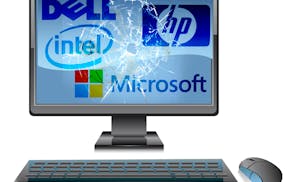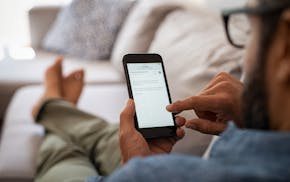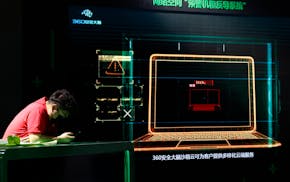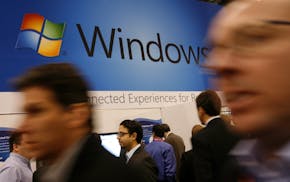Q: I often swap data files with friends and co-workers who own Windows PCs and Macintosh computers. Because some Internet service providers have "excessive use" policies that discourage uploading and downloading large amounts of data, we use a flash drive or an external hard drive to make the data transfer.
But sometimes a Windows or Mac computer won't recognize the flash drive or portable hard drive. Is there a way to format these drives to enable the exchange of data? (I've discovered that using the FAT32 format seems to work, but I'd appreciate any help you can offer.)
Jim Hafner, Coon Rapids
A: As long as you format the flash drive to the FAT32 or ExFAT specifications, you should be able to transfer files back and forth between a Mac and a PC.
FAT32 stands for "32-bit file allocation table," a data storing scheme that either a Macintosh or Windows computer can use to access the same files on a flash drive or hard drive. FAT32 has only one drawback: It can't handle files larger than 4 gigabytes, which is the size of a large video file.
If you need to move files larger than 4 gigabytes between a Mac and a PC, use the ExFAT (Extended File Allocation Table) format for your portable drive. It is said to place almost no limits on the size of individual files.
To format a flash drive or hard drive, connect it to the USB port on a Windows PC, right-click the drive in Windows Explorer and choose "Format." From the drop-down "File system" menu, select either FAT32 or ExFAT. Click "Start." (Note that this erases all data on the disk being formatted, so back up the data first.)
If some of your friends are having problems with a properly formatted flash drive or hard disk, it may be caused by the type of USB port they're using. Some external flash drive hubs don't work well, so you're better off using the USB ports on the computer.
In addition, USB ports on computers made before 2001 use the USB 1.0 or 1.1 technology. They may not be able to read today's portable devices, which use the USB 2.0 or 3.0 specifications. If that's the case, an Internet data transfer is a good alternative.
Q: My kids have allowed the Bizcoaching bug into our computer, and my Norton security software can't find it. How can I get rid of it?
Randy Kraemer, Rosemount
A: The Bizcoaching virus is a disreputable advertising program that may bring you pop-up ads or malicious software. To get rid of it, see tinyurl.com/ou4954s, which explains how to manually remove Bizcoaching from your PC and Web browser, then how to download the free security programs AdwCleaner, Junkware Removal Tool, Malwarebytes Anti-Malware Free and HitmanPro to make sure that Bizcoaching is gone. I've downloaded and used all these free programs with no ill effects.
E-mail tech questions to steve.j.alexander@
gmail.com or write to Tech Q&A, 425 Portland Av. S., Minneapolis, MN 55488. Include name, city and telephone number.

Alexander: A beeping computer is telling you what's gone wrong inside

Alexander: How to stop deleted iPhone e-mails from coming back

Alexander: Refurbished PCs may need a BIOS update to use new components

Alexander: Windows 11 not always to blame for browser or e-mail problems


